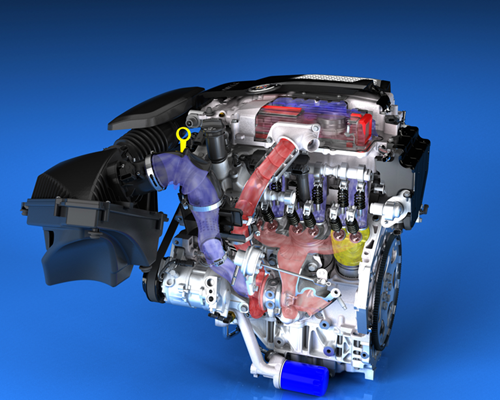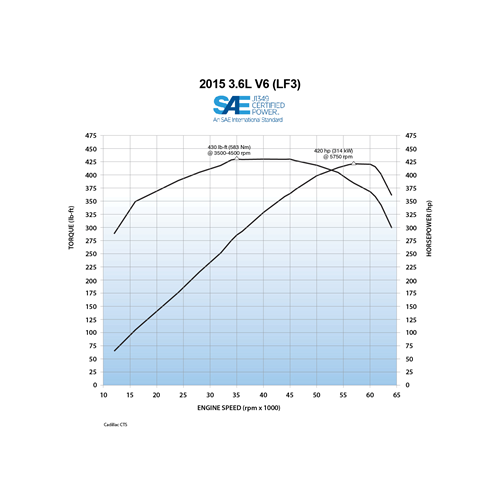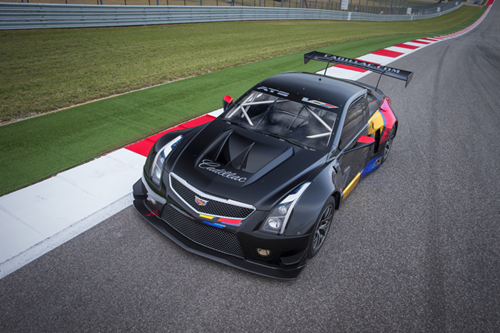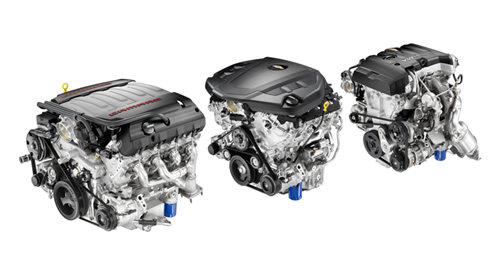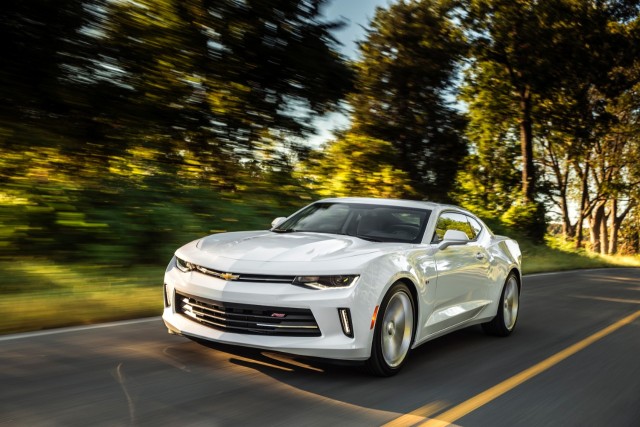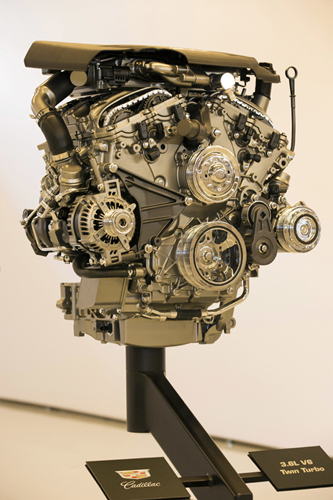 With the 6th generation Camaro riding on the highly acclaimed Alpha platform, replacing its predecessors’ Zeta platform, it’s not difficult to speculate the possibilities that may arrive in the future. Although the Camaro 6 shares the Alpha platform with its Cadillac brethren, 70 percent of the Alpha parts are unique to the Camaro 6.
With the 6th generation Camaro riding on the highly acclaimed Alpha platform, replacing its predecessors’ Zeta platform, it’s not difficult to speculate the possibilities that may arrive in the future. Although the Camaro 6 shares the Alpha platform with its Cadillac brethren, 70 percent of the Alpha parts are unique to the Camaro 6.
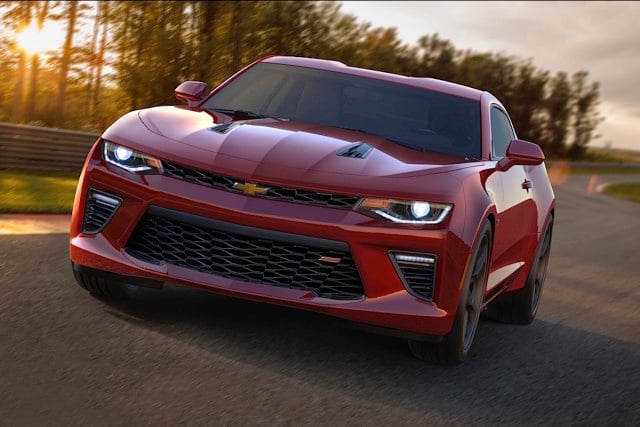 Powering the Alpha platforms is GM’s high-feature (HF) engine selection, which has been improving rapidly since its inception. This continuous improvement of the turbo V6 platform has roots however that trace back to 1986. The Buick Grand National (GNX) LC2 was revolutionary at its time; using the latest turbo technology to increase the output of smaller displaced V6 engines, while promoting more efficient fuel consumption over its V8 brethren. However, the concept and reality exceeded its reputation on the streets, in terms of reliability and popularity.
Powering the Alpha platforms is GM’s high-feature (HF) engine selection, which has been improving rapidly since its inception. This continuous improvement of the turbo V6 platform has roots however that trace back to 1986. The Buick Grand National (GNX) LC2 was revolutionary at its time; using the latest turbo technology to increase the output of smaller displaced V6 engines, while promoting more efficient fuel consumption over its V8 brethren. However, the concept and reality exceeded its reputation on the streets, in terms of reliability and popularity.
Inherently, since the Camaro 6 was built on the Alpha platform, ultimately reducing the weight of the vehicle while gaining strength and producing a more rigid chassis at the same time. GM accomplished this by systematically using alloys and composites, instead of traditional materials and methods. With governmental regulation cracking down on fuel consumption, the focus on efficiency and reduced fuel consumption has never been higher. As a result of this, we can expected an influx of economically-based turbocharged variants replacing traditional power plants.
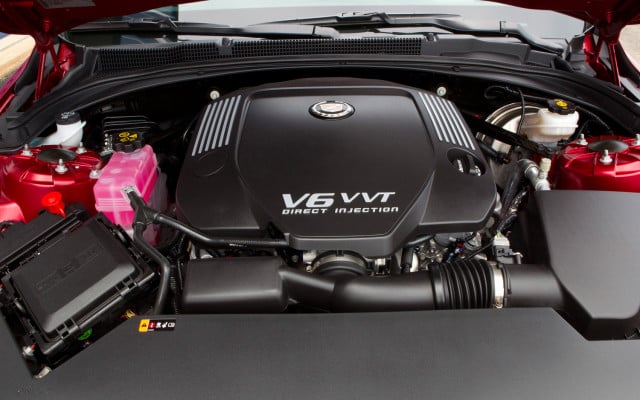 GM’s HF engine program is responsible for churning out the V6 series; including but not limited to, the LF3, LF4 and the venerable LF4.R. Currently we are seeing the LF3 and LF4 powering Cadillac CTS-Vsport and the ATS-V, respectively. And we are hoping to see this engine jump Alpha platforms, leaping into an engine bay with great V8 heritage. The LF4.R (performance variant of ATS-V engine) is already making a name for itself in the FIA GT3 circuit community.
GM’s HF engine program is responsible for churning out the V6 series; including but not limited to, the LF3, LF4 and the venerable LF4.R. Currently we are seeing the LF3 and LF4 powering Cadillac CTS-Vsport and the ATS-V, respectively. And we are hoping to see this engine jump Alpha platforms, leaping into an engine bay with great V8 heritage. The LF4.R (performance variant of ATS-V engine) is already making a name for itself in the FIA GT3 circuit community.
The thought of a twin-turbo DOHC V6 turning the tires on a 6th generation Camaro may discourage some bow-tie enthusiasts but, at the same time may invite a younger crowd of enthusiasts. We saw the naturally-aspirated DOHC bent 6 LFX powering the base model Camaro, with much success, and now we can expect even more out of the revised LGX. Essentially, the LGX is a clean sheet design sharing few similarities to its predecessor, building on efficiency. The LGX uses the same deep-skirt aluminum cylinder block that LFX has, but is boasting more horsepower (SAE 355 hp) and structural strength. We can find it powering the Cadillac ATS, CTS, CT6 and 6th generation Camaro.
Although the LGX is considered an entry-level engine for the Alpha lineup at GM, it packs a serious punch using the latest technologies. Using VVT with their new four-cam phasing system with intermediate park technology, and optimized direct-injection, dramatically boost fuel efficiency. A new “target” cooling system has been implemented in the new design, and many other techniques have been employed by GM engineers to build on this clean-sheet design. The LF3 (shown below) and LF4 share similar technologies, but each receive boost from a pair of turbochargers, multiplying its power output. Currently, these engines are powering Cadillac’s premier vehicles, the ATS-V and CTS-Vsport.
So, what about the LF3 and LF4 being offered in the Cadillac ATS-V and CTS-Vsport? Some enthusiasts are disappointed not seeing the LS3 or LT1 as the peak performance option, because the LF3/4 lacks two cylinders and doesn’t rapid torque naturally. However, both motors use a unique dual-turbocharger system to make a replacement for displacement. The 3.6-liter LF3 shares the integrated exhaust manifolds, VVT, aluminum block, “high-tumble” intake port design, and other designs that are utilized in the naturally-aspirated HF engines (i.e. LFX). The architecture that the LFX uses was the perfect platform to pressurize with boost, and to make a tire-slaying turbo V6.
Cadillac LF3 and LF4
The LF3 received a small pair of Mitsubishi TD04t turbochargers, which spool very quick due to their small size, minimizing the infamous turbo lag associated with turbocharger equipped cars. It also utilizes vacuum operated waste gates, something that GM has shown to improve throttle response and turbo control. The LF3 makes a SAE-certified 420 hp and a notable 430 lb-ft of torque (shown in Dyno chart below). This immediate torque response is coupled by the extremely short intake track designed by GM, decreasing the distance the forced air must travel, greatly improving throttle response.
This instantaneous response is further improved by the implementation of an air-to-water intercooler stacked on the intake manifold. Tom Read from GM Powertrain said the intercooler facilitates compact “packaging” while also providing fantastic “heat rejection performance” characteristics. Choosing this style of heat exchanger, with its proven effectiveness on the LSA engine, allows us to dramatically reduce the size of the intercooler by using an air-to-air intercooler and increase heat exchanging abilities. The higher performing variant of the LF3, dubbed the LF4, takes this technology and pushes the envelope even further.
The LF4 is a higher-performing variant of the LF3, with several notable modifications that allow the motor to push out an astonishing SAE-certified 455 hp and produce 445 lb-ft of torque. The motor received a pair of BorgWarner turbochargers, fitted with titanium-aluminide turbines, furthering the ability to create torque instantaneously. The upgraded titanium-aluminide (Ti-Al) reportedly reduces inertia load by a staggering 51 percent. More titanium bits are used for engine rods, reducing rotational masses so the engine not only spins quicker, but also can sustain the higher loads created at an increased rev limit. The LF4 has the ability to create 90 percent of its torque from 2,400 rpm all the way to 6,000 rpm, creating a broad usable torque band. Read said this was possible because of the “light weight (Ti-Al) turbine wheel.”
GM also implemented the use of their patented low-volume charge-air cooler, which has proven to be durable and efficient. Read also stated that the “low volume compressed air flow path”, allows the boost to reach its target (i.e. water-to-air intercooler) faster. The compactness of the proven water-to-air intercooler is capable of using shorter intercooler pipes, significantly less than traditional air-to-air setups. Since the was LF4 extensively developed and designed with motorsport in mind, a high-performance lubrication system was used to provide consistent oil pressure and ventilation while on the track. All of this creates an extremely responsive motor, sustaining power throughout the rev range. Cadillac’s next logical step in elevating the V series brand was developing a successful racing program on the world circuit.
Cadillac ATS-V.R
Cadillac set its sights on developing a FIA GT3 spec car, to compete on the international level. This gave birth to the ATS-V.R powered, by the LF4.R, and bringing remarkable performance to the table. The engine is based off the production spec LF4, but is built as Cadillac’s racing version. The engine was developed by GM’s Motorsport division, and has all the elements to make a screamer on the track. Making incredible power and being durable at the same time it makes upwards of 600 hp. The ATS-V.R roars intoxicating sounds as it goes down the track through its dual side-exit exhaust system.
To increase the output, the engine received a pair of larger BorgWarner EFR series turbochargers. Handling the copious amounts of boost are a pair of stacked air-water coolers with increased displacement. Although there is no confirmation on whether or not the LF4.R or LF4 will become a high-performance crate motor offered directly through GM, Dr. Jamie Meyer did say “for now the LF4 is not a performance crate engine”. He said “for now,” so hopefully we will see LF4 crate motors in the future. The ATS-V.R is a well-balanced machine, with a 49/51 weight distribution and is currently competing in the FIA GT3 circuit. GM achieved this by giving the race car a rear transaxle, counterbalancing the all aluminum motor up front. . Although we still have yet to see the ATS-V.R’s success on the grid, we can expect it to provide a fierce battle. It seems GM is taking their forced induction lineup to new heights but there is a lot going on in the naturally-aspirated department. We know one thing for sure, the LF4.R would make a killer crate motor.
GM Turbo Four Cylinder To NA V8
Although Cadillac did not receive the LT1 in its lineup, like so many enthusiasts wished, Chevrolet is offering the ultra-efficient V8 in the Corvette Stingray and in the 6th generation Camaro. The Gen V small block is completely redesigned, featuring many advancements in technology. Using direct-injection, variable valve timing (VVT) and cylinder-deactivation, it achieves impressive fuel efficiency.
Direct-injection requires consistent high fuel pressure supply, and GM satisfied this condition by mounting an engine driven fuel pump. The LT1 also utilizes a patent-pending integrated PCV system, giving it three times the ability to separate oil/air, when being compared to a traditional PCV system. Improving oil life and reducing oil consumption considerably. This decreases the amount of emissions generated by LT1. With the LF4’s efficiency, and LT1’s capability of producing excellent power, yet achieving both qualities in different ways, which motor would you like to see in the 6th generation Camaro?
The LF4 in the Camaro would be considered sacrilege to some, but it may open the door to another market segment. One that hasn’t existed, because it’s never been an option for the Camaro. The base LFX and LGX naturally-aspirated engine shared some success because of its efficiency and attraction to entry level consumers. The LS3 in the Camaro SS was an instantaneous hit, and a major favorite motor among enthusiasts with seemingly endless tuning abilities. We hope to see the revised and updated version, the LGX, sharing the same success.
The LT1 in the 6th gen Camaro, would hold true to the vehicles’ roots, having an immediate following before it even was released. Would you buy a TT DOHC V6 Camaro? Read said “regarding (whether or not) the LF3 or LF4 could ever become a viable option in the Camaro in the future the answer, at this time, is are these exclusively Cadillac engines.” But wasn’t the 2.0 turbocharged a Cadillac exclusive engine that is now serving as the base model Camaro 6 option? Time will tell
Alpha Camaro
Since the Camaro is riding on GM’s successful Alpha program, the Camaro is more efficient than ever. Having shaved 200 lbs off its predecessor and producing more power, more efficiently. The LT1 in the Camaro, would hold to true what defines hardcore Chevrolet enthusiasts. With the success of GM’s Alpha platform program in the Cadillac division, particularly with the ATS and CTS, why not share some success with its bow-tie cousin? The fact that someone would buy a Camaro, not because it’s a Camaro, but because it has an LS3 is telling of the success of GM’s powertrain development.
GM has had tremendous success with their LSX offerings, and some would argue that GM would be complacent developing a TT V6 to rival their own powerhouse. Why not though? The forced induction marketplace is flooded with competition (i.e. 2016 BMW 340i, Ford EcoBoost, etc). The Alpha program has demonstrated GM’s ability to improve on chassis design, reducing weight in critical areas, and increasing the power to weight ratio without just throwing power at the problem. Throwing power at the ever -increasing vehicle weight is beneficial for maintaining a certain power-to-weight ratio, however, it’s not the best method for improving it.
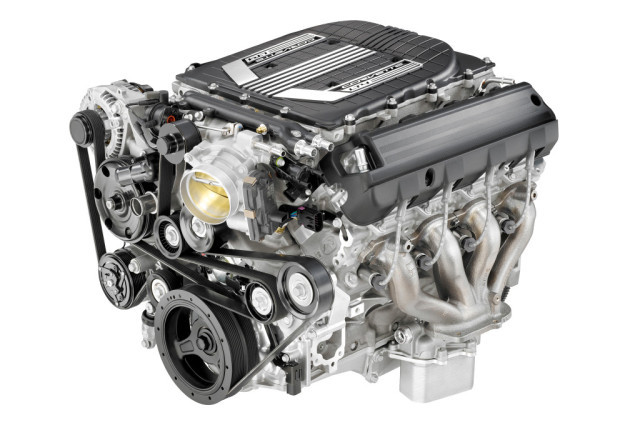
Currently at the top of the Camaro engine lineup. Could a twin turbo V6 threaten the supremacy of the latest small block Chevy?
The ingenuity behind GM is sanctioning its engines to remain triumphant in this highly competitive performance automotive environment. GM’s HF engine family and Alpha platform has rejuvenated the brand in critical areas, particularly rebuilding Cadillac’s image. The LF4 is a part of GM’s new powertrain development program, giving their loyal customers a choice against their competitors’ offerings. Prior, you could only expect a torque-monster V8 from the likes of GM or Chevrolet, but now we can expect some blistering fast turbocharged variants, and now not just from Cadillac. GM is making their 2016 lineup slimmer and faster. Which is a deadly combination, and with its new engine offerings anything is possible.
Turbo 600 LT1
The LT1-sporting Corvette Stingray is sharing its optimal power plant with its brother, the 2016 Camaro SS. The LT1 in the Camaro SS differs from the Stingray, with its cast tri-Y exhaust manifold, pumping out a comparable 455 hp. The Stingray gets an astonishing 17 city and 29 hwy mpg, primarily because of its use of continuously variable-valve timing (VVT) and its newly developed direct-injection with active fuel-management (AFM). The AFM shuts down four cylinders when activated, significantly saving trips to the pump. The LF4 in the ATS-V has a reported mpg of 17 city and 23 highway, oddly being beat by the LT1.
The notion of gas guzzling V8s are a problem that only exist in the past. The highly developed small-block Chevy maintains performance and efficiency, and in comparison, some would say bests the LF4. Although the LGX received AFM, the LF3 or LF4 did not receive this option, which would potentially increase the highway fuel economy closer to its V8 brother. Both have a SAE-certified 455 hp, but hit the mark in very different ways, albeit they are sharing some similarities between like VVT and direct-injection. The weight difference of the two engines is negligible. The compactness of the LF3, greatly reduces its weight to the sum of 485 pounds. The LF4 is even lighter and uses uses titanium components, making the weight comparable to LT1, and tipping the scale at 465 poounds.
The versatility of the LF4 makes it the ideal candidate to jump platforms in the Alpha lineup, and with the ability to be mounted transverse and longitudinally the possibility for such a jump is there. Although GM may have given Cadillac the ability to develop its engines independently, the technology is being shared across all GM platforms. Cadillac has invested a significant amount of time into its racing program, and its success is yet to be determined on the circuit. An LF4-powered Camaro may still be a concept, but can surely become a reality soon. Would you purchase a TT DOHC V6 powered Camaro?



